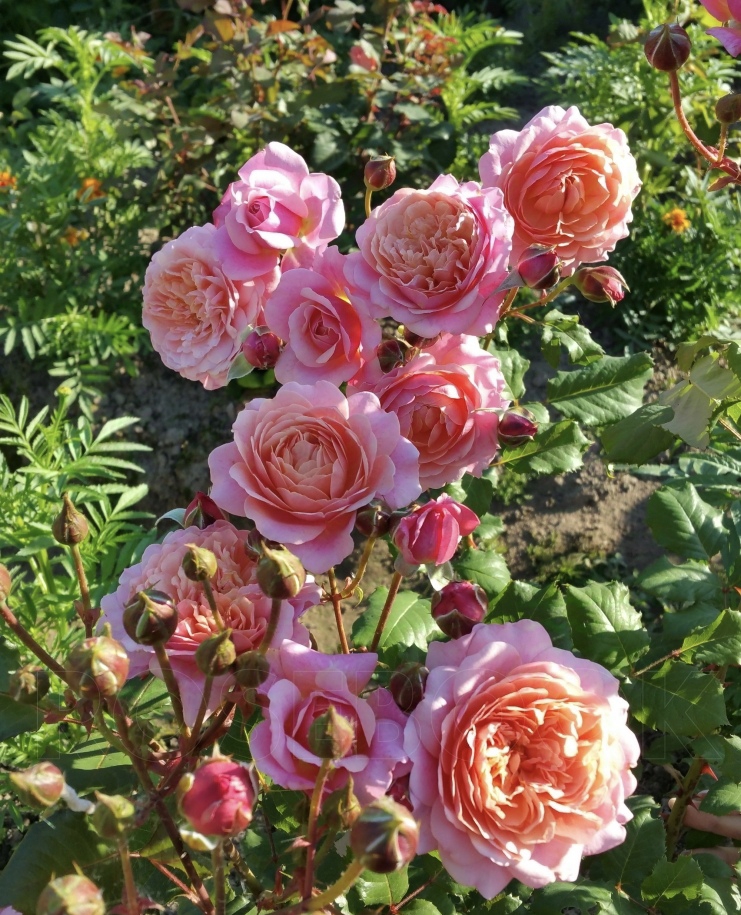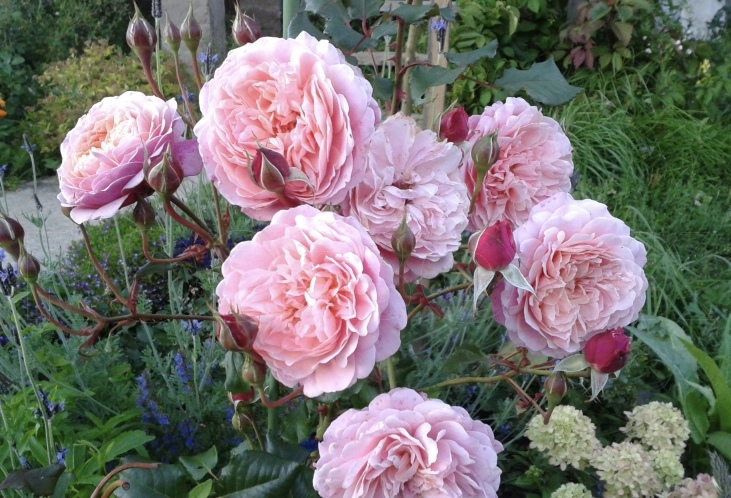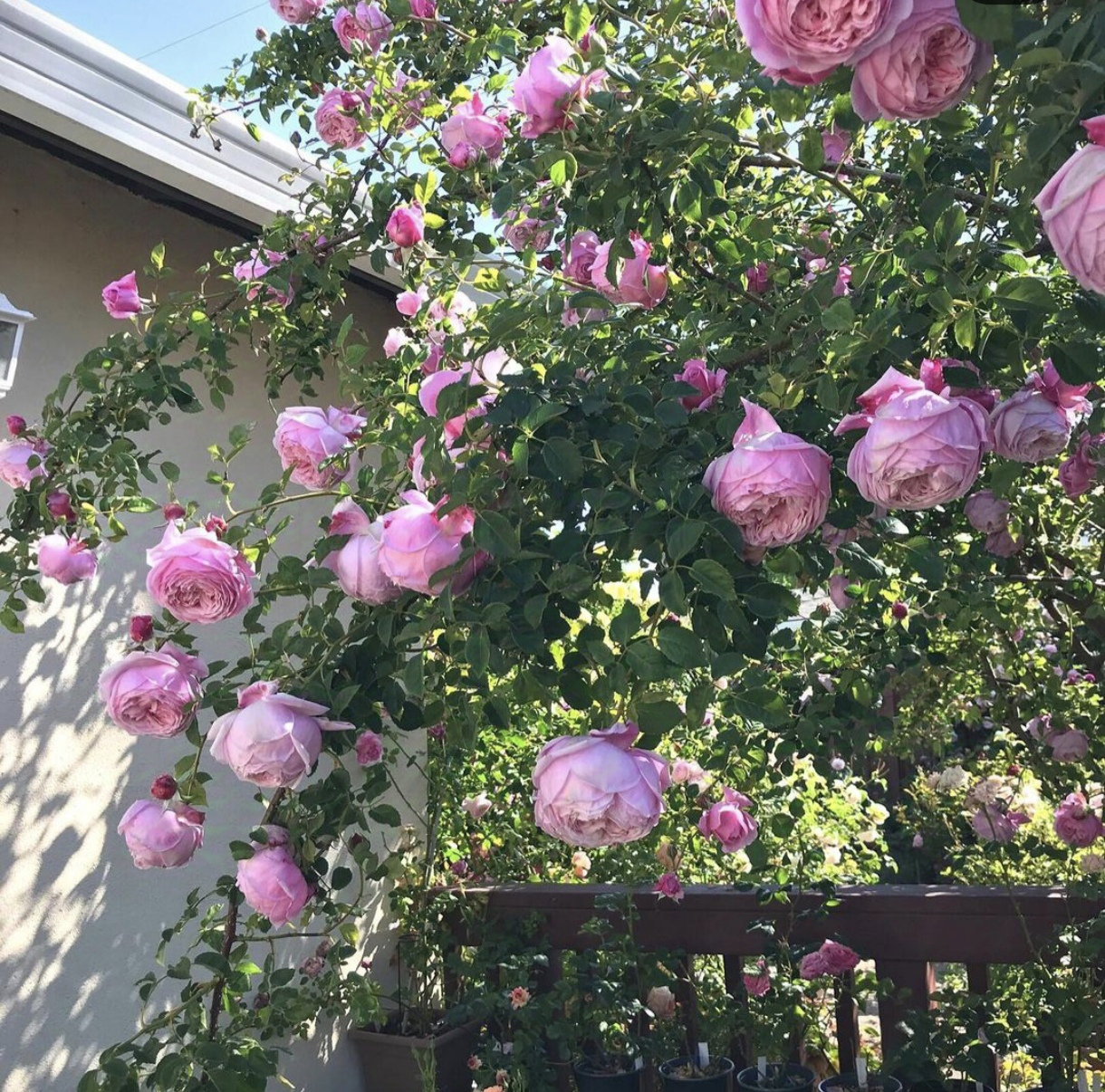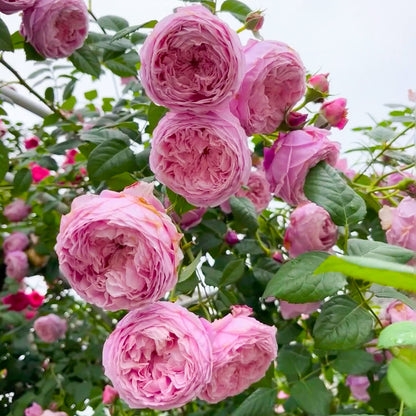In Australia the situation was different. Due to the ideal climatic circumstances breeder Alistair Clark took on the challenge and started to cross with our R. Gigantea and with great success. Lorraine Lee, Aussie Sixer, Golden Vision, Nancy Hayward and many others are still Australian gems and widely grown in south Australia but except for Lorraine Lee few made it into Europe.
In the USA some Giganteas such as Twilight mist and Nessie were created but they stayed mainly unknown and are currently threatened with extinction. Also some sports and seedlings from Belle Portugaise were found: Susan Louise and Belle Blanche but they also didn't find their way to many customers.
In China Lijiang road rose was discovered: A giant Gigantea hybrid that made it to Europe. Today she's one of the most widespread Gigantea hybrids in the rose world. A light yellow sport is also available.
And then Viru Viraraghavan from India began to use R. Gigantea in his crossings. Viru, a very humble man got assistance from his wife Girija. In the beginning (sixties and seventies) Viru mainly wanted to cross with R. Gigantea because she was a native rose to India. Viru and Girija loved the European Tea roses such as Rêve d'or, Safrano and Madame Falcot. They did well in many parts of India and Viru wanted to use these roses in his future crossings with R. Gigantea. Many varieties appeared and not few had exquisite flowers. They did very well in the moist but hot climate of Kodaikanal in India.
When climate change started it became clear that the European, classic roses, but also HT's and English roses from David Austin weren't made for hotter times with more periods of drought. Not only in Europe the roses started to feel the climate stress but also in India and other warm parts of the world. Viru realized that his Gigantea Hybrids could be the missing link in obtaining new, heat, drought and rain resistant roses. He continued his work and in 2023 he had more than 60 varieties of which a majority with Gigantea blood. Most are climbers with very big, Tea rose shaped flowers and a nice Tea fragrance. Some rebloom and some do not but all are strong and vigorous.
The biggest problem for Viru was in getting his creations to Europe, USA and Australia. Due to horticultural laws and quarantine rules it proved to be a major task. Some varieties reached the USA and Australia but Europe was a problem. Still, Viru and Girija succeeded in getting some cutting material to Davide de Libera of Novaspina nursery in Italy. Davide started to propagate them.
Then I came in the picture. Because our rose garden was suffering from heat and drought the past years I decided to switch to more heat and drought resistant roses so I ended up with the Teas, Tea Noisettes and China's. From that moment on R. Gigantea came across my path naturally as she's a parent of the China's. I came in contact with Viru and Girija and there was an immediate click between us. Viru's creations really impressed me and I wanted to help him getting them to Western Europe. Sadly Viru died in December 2023 being well in his eighties. I made a commitment in getting his roses to Belgium, France and Spain. Girija brought me in contact with Helga Brichet and Di Durston, two very important ladies in the rose world. Helga is President emeritus of the international rose association and Di is a Tea rose expert from Australia. She wrote the highly acclaimed Tea rose book: Old Tea roses for warm gardens.
Helga has an acclaimed rose garden in Perugia Italy and it's best known for housing the biggest collection of Gigantea hybrids in the world. Helga wanted to help me in spreading the Giganteas into Europe. She's going to send grafting material of all her Giganteas to Lens roses in Belgium in July 2025. Lens will graft them and then I will have several specimens of each variety. Some will get planted in my garden, at Park Abbey in Leuven and some will go to Loubert nursery in France. Loubert is the largest heritage rose nursery in the world and Jérôme Chêne, the owner, showed major interest in my project. Loubert will be able to spread the Giganteas all over Western Europe.
Last year I contacted Davide from Novaspina asking him if he could send me some of the Viru Giganteas and he said yes. I'm expecting them the coming weeks so this means I can finally start growing them and spread them to Lens roses, Loubert roses and other nurseries and rose enthusiasts. I will keep you informed about how it will unfold the coming weeks, months and years so stay tuned!
















